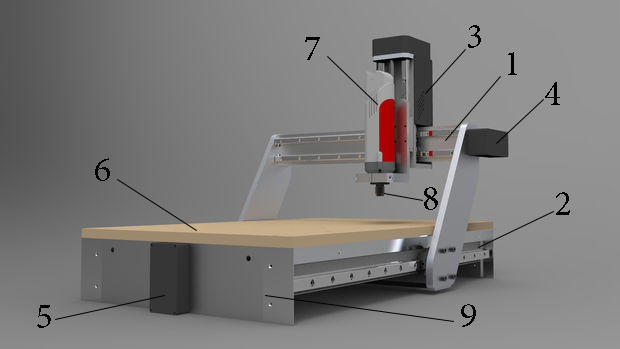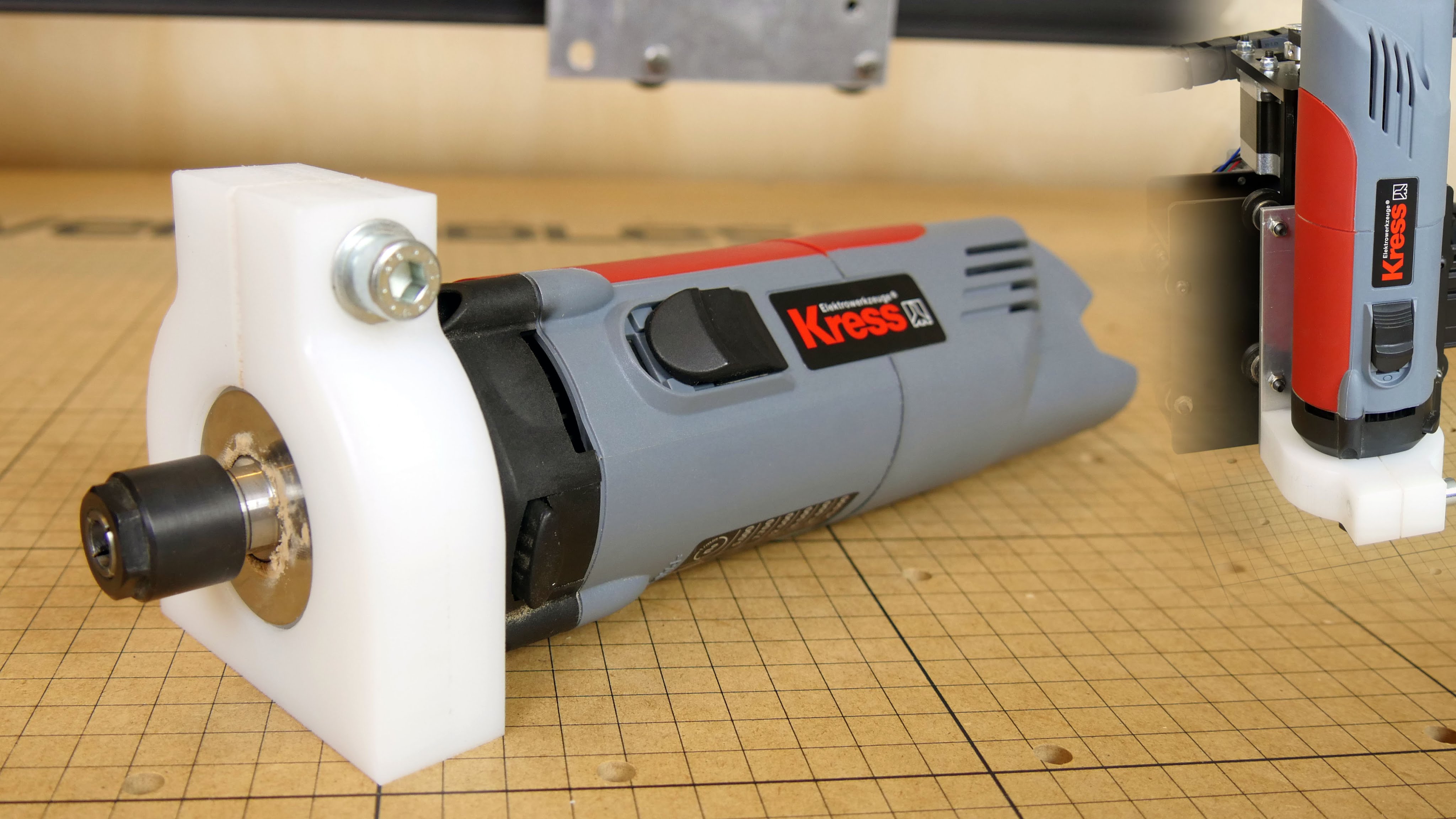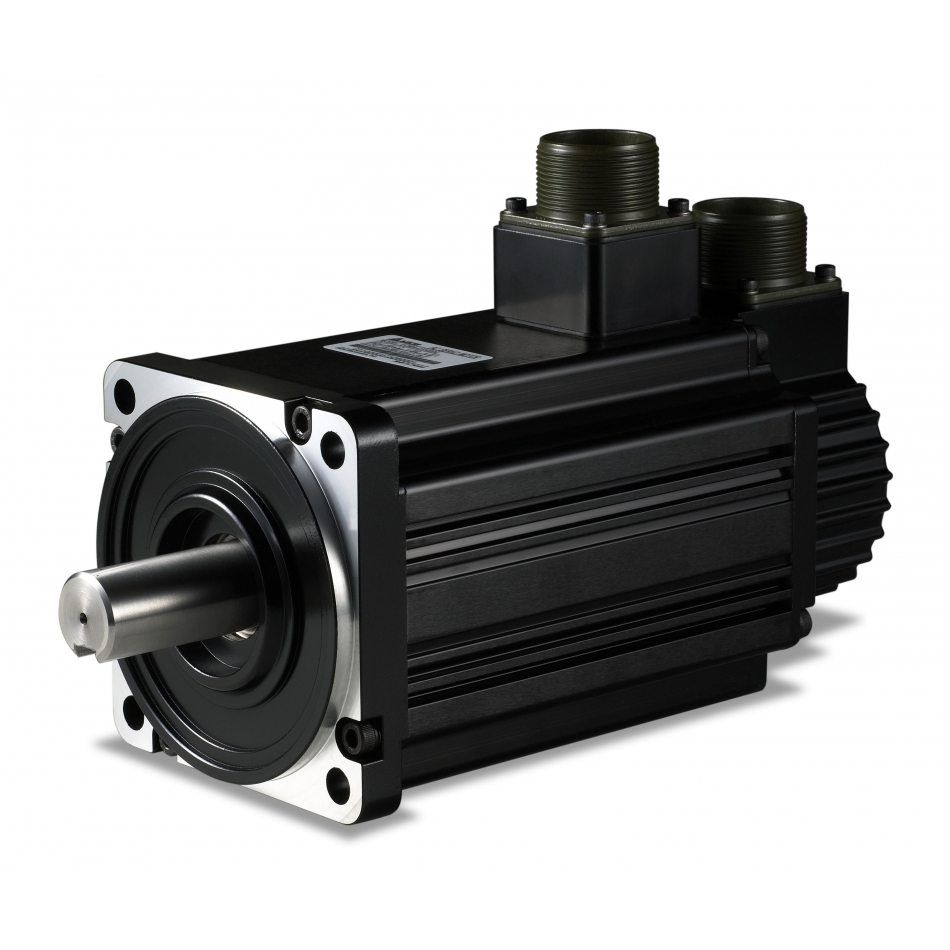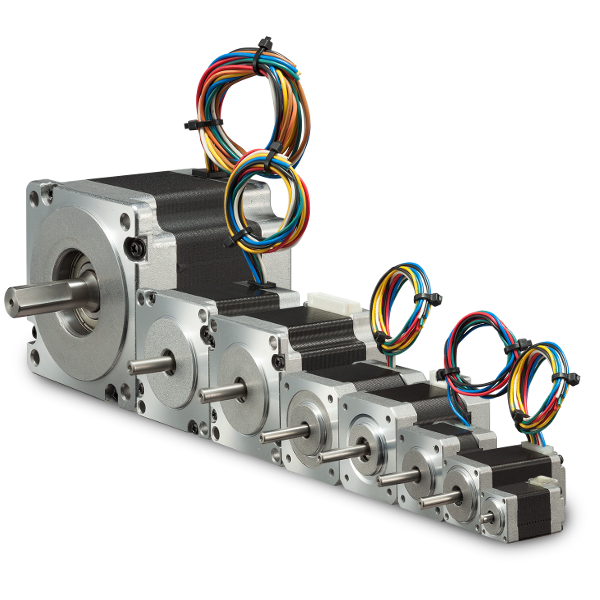Purchase of the first cnc router. Choose the optimal field size. CNC Router Selection Criteria
Have you repeatedly wanted to know the possibilities of a CNC milling machine? Before you start looking for such a machine for your purposes, you need to determine what exactly you will use it for. Size and Functions of CNC Milling Machine for Machining various materials may differ significantly, but in general they are similar for all types of machines.
First of all, you need to determine the size of the machine and make sure that there is enough space for it in the room (workshop or workshop). Then you need to study latest news in the CNC world and make sure that the machine you buy is up to date (only if it is important and not financially critical).
One of the significant factors influencing the choice of CNC milling machine is the cost of purchase and installation. CNC, which stands for "Computer Numerical Control", is the process of controlling the machine with the help of a computer program. In the recent past, quality machines were very expensive, but now their price has dropped significantly.
Before purchasing, be sure to find out about the accuracy of the purchased machine and its speed, as well as how their change will affect the cost.
Faster machines that can cut and mill to a certain tolerance will cost more, while slower, smaller, less accurate machines will cost less. For amateur purposes or a home workshop, a low-speed machine is enough, but for professional use, in order to cope with the entire workload, it is better to opt for an automatic machine with high processing speed and high accuracy.
Classification of CNC milling machines
The classification of CNC milling machines is quite different. Some models of machine tools will differ in design, namely, the ability of a CNC milling machine to independently change the tool. This function allows the machine, by selecting according to the program, to replace the working tool (milling cutter) without human intervention. The machine knows which cutter should be selected and used for certain tasks, which allows continuous processing of the workpiece without stopping.
Cheaper machines need manual replacement cutting tool, which adds work to the operator and slows down the whole process. The machine cuts edges and even shapes inside the workpiece, where tool changes are difficult, with the help of fast-rotating milling cutters mounted on the engine. Manual replacement of the working tool will require constant attention to the process.
Other features to consider when choosing a CNC router are:
- spindle cooling system (air or liquid);
- a wide platform on which you can easily fix the part for milling;
- high quality frame materials such as steel and aluminium;
- easy to use CNC Programs.
Which milling machine CNC to choose based on such features?
One of the very useful options for a milling machine is a dust collection and removal system (exhaust), which removes dust directly from the cutting site, which allows you to keep clean working room. The dust collection system will prevent the accumulation of small particles in the air, thus avoiding breathing problems, poor visibility, etc.
How to choose the right CNC machine
There are many types and manufacturers of CNC machines. When buying a new or used (used) CNC machine, there are a number of key features to look out for.

The picture shows simple design CNC milling machine, it consists of the following parts:
- X axis;
- Y axis;
- Z axis;
- X axis drive;
- Y axis drive;
- Desktop;
- Spindle;
- Cartridge for installation of the cutting tool;
- Machine body (in this case aluminum).
Consider the most important characteristics of the machine:
Number of axles
This is the most fundamental quality of any CNC machine. In most basic designs, the cutting head moves in three directions - X, Y, and Z - and the tool itself is always pointing down and aligned with the Z axis. This design is a little limited compared to multi-directional machines containing a fourth and even fifth axis.
The material from which the machine is made
Cast iron or steel structure provides more high level rigidity and the ability to produce even the largest workspace but is very heavy. If moving the machine around the workshop is not planned, then this option is optimal, but if frequent rearrangements are planned, then it is better to pay attention to machines made of aluminum, they are much lighter, and practically as strong as steel ones.
In the event that you will process soft materials and the machine will not experience heavy loads during operation, then you can make a choice in the direction of the design of polymer materials(acrylic, PVC).
Using a dedicated spindle
The spindle connecting the motor and the rotating tool has a great influence on the accuracy of the CNC machine. Its main task is to ensure that the rotation of the tool is concentrated in one point, has a minimum of vibration, and that these conditions are met even at maximum load.

Spindle over High Quality increases accuracy by reducing the total amount of side-to-side oscillation, and also reduces the difference between the intended and actual tool diameters.
For non-ferrous metals, wood, plastics and other similar materials, it is recommended high speed spindle rotation. When cutting soft materials at low spindle speeds, the flutes in end mills will become clogged with chips and ruin the part. The only way to avoid gumming cutters in soft materials at low spindle speeds, this is to reduce the feed rate.
Ranges of mechanical movement
Large tool travel ranges allow machining large area workpieces in one pass. To determine the dimensions of the machine that you need, consider the maximum size of the products with which you are going to produce on it.
Travel speeds
There are many factors that affect the amount of time it takes to machine a particular workpiece, but the main one is always the performance of the CNC machine itself. “Why not do the processing at maximum speed?” - you ask. As already mentioned above, high movement speed does not always have a positive effect on quality finished products. For example, acrylic, at a high feed rate, begins to melt and deform, the wood is charred, this has a bad effect on the working tool, the cutters also “burn”.
If you are wondering: "How to choose a CNC milling machine?", then it is very important to pay attention to top speed movement if it will be used for non-amateur purposes.
Stepper motor or servo: advantages and disadvantages
The types of drive motors for each of the axes are divided into stepper motors and servo drives.
Servo drives have higher accuracy compared to stepper drives and are much more expensive. The main advantage of a servo system is that it checks its position with each movement relative to an independent measuring device- glass scale. This is a whole complex.

Servo
Stepper motors are open loop systems that execute a chain of commands without checking the position relative to the measuring device.

stepper motor
Definitely, servos are more accurate, but stepper motors do not add a very large error in operation. The choice between a servo and a stepping system only depends on how precise the end product needs to be.
The choice of equipment for the organization of production is not an easy task requiring special engineering knowledge and vocational training. Each type of equipment is selected based on specific needs and production tasks. At competent organization production is compiled routing operations, where it is written:
- What operations need to be performed
- What is the sequence of operations
- What is the frequency of performing repetitive operations
- How long does it take to complete each operation
- What materials and what equipment is needed to perform operations.
The development of production set different tasks for the processing of workpieces, therefore the designs of milling machines also changed and developed, which led to a huge number of types and models of this type of equipment. Milling machines are horizontal, vertical, console and consoleless, longitudinal, universal, etc. The name of the machine, as a rule, displays the location of the spindle axis or the method of milling parts.
Can be used on milling machines different types cutters depending on the production task. There are several types of cutters:
- keyway,
- shaped,
- cylindrical,
- end,
- end,
- disk.
Milling cutters have one or more cutting surfaces. Each type is designed to perform a specific operation. Keyway cutters, for example, select a groove for the key, cylindrical cutters cut planes, cutoff cutters cut grooves and grooves, etc.
Criteria for choosing a CNC milling machine
When choosing the type of machine, it is necessary to determine the tasks that the purchased machine is capable of performing. The criteria for choosing a CNC milling machine can be the following:
- Machine control methods
- Spindle specifications
- Machine equipment
Portal height and working area dimensions
An important criterion when choosing a milling machine is the height of the portal and the size working area. Small-sized products can be processed on a small-sized machine, while processing large-sized workpieces requires a full-size machine. The working area of the machine in any case must be greater than the dimensions of the workpiece in order to be able to fix the workpiece with clamps. If the machine has a vacuum table, then there is no need to fix the workpiece, the dimensions of the working area of the machine can be the same as the dimensions of the workpiece.
The height of the portal depends on the thickness of the workpiece and on the need to install a rotary axis. Height is measured from worktable to collet. So if the height of the portal is 100 mm, and the cutter from the collet protrudes by 30 mm, then the thickness of the workpiece cannot be more than 70 mm. The greater the height of the portal and the range of motion of the spindle, the better, because. over time, the small height of the portal can become an insurmountable obstacle to the use of the machine.
Machine control methods
Milling machines can be controlled in various ways:
- Using a personal computer, when the machine is connected to a computer using a special board. At the same time, control programs are installed on the computer, in which the spindle speed and the feed rate of the workpiece are set. This type of control is ideal for individual production, since you can control the machine and create control programs using one PC.
- With the help of a DSP controller - a small remote control that controls the machine. This control is convenient for mass production of a large range of standard parts. Control programs are entered into the controller from a flash drive. This is convenient in mass production in that the control programs do not change for so long as there is a demand for a series of manufactured parts.
- Via special systems machine control, allowing you to control the tool change in automatic mode, programmatically adjust the length of the tool, provide feedback to servo motors, and much more.
Lord, welcome! I thought about buying a cnc milling machine for metal. The whole question is in the size of the device and the stroke along the axes. I can’t buy 1500x1500x1500 just to have a reserve, it’s important to purchase a machine that will be loaded and worked out the invested grandmas by 100%. I can’t afford to buy a hefty haas and process parts 200x200x50 mm on it. The purchase should be as practical as possible. I understand that you can put 5 small blanks on a large table at once, but I'll get by. I will change the workpiece and re-bind. In general, I think those who work in production should have an approximate idea of what is the approximate size of the part that is the most popular + -, which is rarely used. In general, I would like to hear from practitioners something like advice on which processing field to look at. For example, someone has 2-3 haas in the workshop, and what are the average products they produce? Or at least to what size to look? I'll be very thankful. If there are more recommendations on turning, it would be generally great. Perhaps someone sees that having a small one with a milling fixture is better than something like a 16k20 with a revolver.
evidence 03 November 2016 - 22:18
- City: Kyiv
Purchase of the first cnc router. Choose optimal size fields
And how to understand the "most popular size of parts"? This is not Ikea
In general, the most "running" size of machines is with a flow rate of X in the region of 750mm. In such cases, Y and Z up to 500-550mm. This is if the classic layout, and not the portal.
I have OTs with both 750mm and 1000mm, but to be honest, I haven’t met parts that require even 750mm of flow. The standard set on the table is two pairs of vices with a 200mm expansion and a 160th cartridge. Sometimes a corner. A set of spanners for each machine is required.
For lathes, your comparison is wrong, since normal used. A mazak with a driven tool costs 30-35k USD, and 16a20f3 (or whatever they are ...) costs 5k USD, with equal processing dimensions. Only Mazak turns quietly at 3500 rpm, and 16k20 already at 2000 "takes off", and the part comes out not in half an hour, but in 3-4 minutes. But again, it all depends on the specific job. After all, you can take it with a drive, with a counter-spindle, and with a Y-axis, and sharpen studs-bushings-consumer goods. Again, from personal experience, I didn’t come across any work where I couldn’t do without a drive. Although we refine many parts manually and only perform the centering operation with a drive, and drilling and threading are already “handles”, or we transfer all operations with holes to a milling one, since there are more mandrels there))
SORTER 03 November 2016 - 22:57
- Moscow city
- Name: Leonid
Purchase of the first cnc router. Choosing the optimal field size
evidence, informative. With a milling cutter, I understood you. I would like a couple of opinions and it would be enough. As for the lathe, I meant that more often the same one with a driven tool for consumer goods will be more in demand than a full-size one without a drive one, or vice versa. Well, that is, there is money, say, at http://www.abamet.ru...rnye/haas-tl-1/ or at http://www.usedsolut...athes/6356.htm? (with milling stray) What do you think will bring more when taking into account the same purchase cost of the machine?
evidence November 04, 2016 - 01:05
- City: Kyiv
Purchase of the first cnc router. Choosing the optimal field size
Forgive me, but choosing machines according to the principle "who will bring more" sounds ridiculous. They, first of all, must fulfill the function assigned to them and you need to choose them precisely according to their functions, and whether these functions will bring money or not will depend on you as a businessman. After all, you can not see and work for a week in marriage, or you can fly into the cartridge, leaving inexperienced adjusters uncontrolled, or in general, leave all the potential profit in cutting plates and broken tools.
According to the machines you cited, I remembered the riddle - "who is stronger - a whale or an elephant"? You are initially comparing two machines designed for different types works. Haas is designed for large small-scale parts, for example, shafts, flanges, blanks for gears, etc., and the second one is purely for small things, and there is no reason to take it without a bar feeder. But if purely theoretical and rude Assuming that you have a high-margin job with a multi-year contract and the possibility, or even the need, to work in 3 shifts, then a machine with a higher number of revolutions on the spindle will "bring" it. Since the more revolutions, the closer you can get to the cutting conditions of the manufacturer (Sandvik seems to already have plates that allow you to "cut" at a speed of 500 m / min on ordinary steels) and, accordingly, reduce the manufacturing time of the part and increase their monthly circulation, which is $$$ . The main thing is not to forget about the control of the dimensions and condition of the cutting tool...
SORTER November 04, 2016 - 01:32
- Moscow city
- Name: Leonid
Purchase of the first cnc router. Choosing the optimal field size
evidence, thank you very much! Indeed, in view of their inexperience, delusions and views on the wrong side of the question are quite possible.
cop511 November 06, 2016 - 14:40
Purchase of the first cnc router. Choosing the optimal field size
Haas, who, according to the first link, is some kind of collective farm. I don’t understand how “positioning accuracy is 0.01”, and “repeatability is 0.005” and what does “manual lubrication system for guides and ball screws” mean, spindle speed 2000 rpm, revolver for 4 slots, accelerated 11m / min, long forgotten classic execution scheme for CNC machine. There is no information about the mass, so it is impossible to estimate the stiffness. There is no transporter. The quality of the nodes is in doubt given the reviews of Haas CNC routers. One gets the impression of a rare Mr. ... on. Bottom line: this machine is not for working in 3 shifts and not for making money.
For this amount, you can take two identical used European CNC lathes from the early 90s, each of which surpasses this Haas in all respects. And having two machines, you can safely repair them.
evidence November 06, 2016 - 20:42
- City: Kyiv
Purchase of the first cnc router. Choosing the optimal field size
Why immediately "g..no")) This is the American version of our 16a20fXX, only it costs less than the annual salary of an ordinary American worker, when our machines 30-40 years old cost like 3-4 annual salaries.
The scheme is classic, but most Chinese machine tools are implemented according to it, and there is not even a revolver, and everyone is happy. Here it depends on the tasks. And the conveyor is, as it were, an optional thing, and if it is not there, then there is no trouble in this either. I don’t have a conveyor on any machine, I somehow got used to it with shovels)) Moreover, they wedge from the drain.
SORTER November 06, 2016 - 20:53
- Moscow city
- Name: Leonid
Purchase of the first cnc router. Choosing the optimal field size
It doesn't matter if it's shit or shit. The conversation is exclusively about the dimensions of workpieces on certain machines and the demand for such machines based on customer requests. Roughly speaking, we comprehend who, in what percentage, what blanks are tearing, no more, no less. The price tags for equipment, their quality and the availability of spare parts for them is another matter. Well, I need German quality and Japanese accuracy if it will stand idle compared to the American "shit" =))
You will also need to look at the software for the CNC portal. CNC (numerical program control) must be connected to a computer that has sufficient power to operate necessary programs. Some portals come with the computer when purchased, while others must be connected to the machine, which must be purchased separately. If you already have a CNC computer that you intend to use with the hobby portal, make sure that the computer meets the requirements of the machine and that the necessary software can be installed on this computer.
The portal is designed in such a way at once to cut off some material from a large piece of wood, metal, plastic or other materials. Before buying a portal, you need to decide which material you are going to process, as this determines which portal to choose. Some machine portals are suitable for carving a variety of materials, while others are suitable for processing only one type of material. The size of the working table and the height of the vertical stroke of the tool will show the maximum possible size of the material being processed. Make sure you buy a machine that will be able to accommodate and cut your intended hobby material.
Some CNC gantry models are designed to work on a workbench, while others have big sizes and own stand or other support. Take measurements of your workspace to determine what design and size of portal will fit your workshop. Remember that the structure can take up a significant amount of space on the workbench, so you need to find a place to leave the portal when not in use. Floor models with their own stand will also take up a lot of space, so these portals are more suitable for large workshops.





